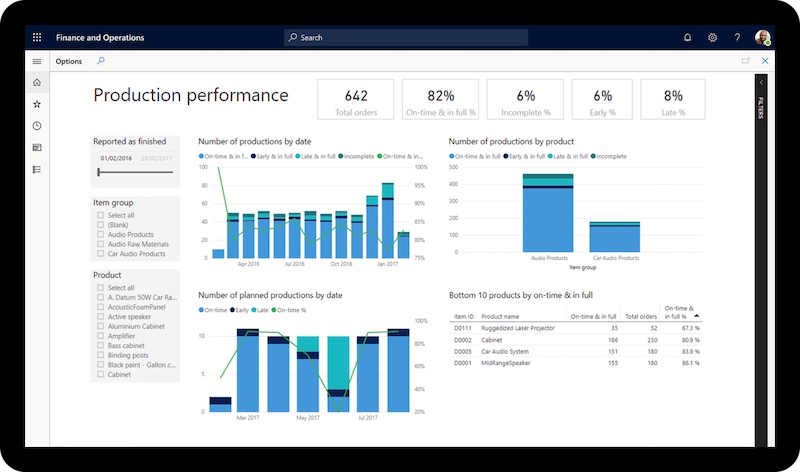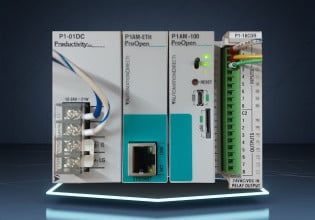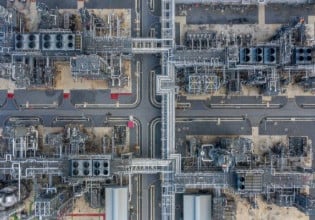How to Use Enterprise Resource Planning (ERP) in Manufacturing
Learn the definition of enterprise resource planning (ERP) and some of its capabilities and uses in industrial spaces.
What is Enterprise Resource Planning (ERP)?
When defining enterprise resource planning, it is important to differentiate the management concept from the software system. The concept of enterprise resource planning consists in the organization, management, and integration of the key processes of a business.
This planning method is preceded by concepts such as economic order quantity (EOQ) and manufacturing resource planning (MRP). Economic order quantity is the earliest known systematic approach to manufacturing scheduling, developed in 1913 by Ford W. Harris. E
OQ was the standard in manufacturing for several decades until 1983 when the concept of manufacturing resource planning (MRP) was established.
MRP revolutionized several industries by conceiving a centralized system in which the core manufacturing processes could share data. Each process was seen as a module of that centralized system.
For the first time, MRP saw the introduction of software platforms and, with this, provided an initial impetus for large-scale data acquisition. As more modules were added to the MRP sphere and computer systems matured, the concept of MRP evolved into ERP, expanding from manufacturing to enterprise-level processes.
Although there is no specific date for when the term ERP was coined, most experts agree it was during the early 1990s, coinciding with the emergence of some ERP software systems that are still very popular today.

Fig. 1. The various areas of a business that can be integrated by the ERP
For the past three decades, ERP software systems have advanced rapidly to the point that they became synonyms with the ERP management concept. The modern ERP system consists of a software platform, integrated databases, and a common interface for users.
Capabilities of an Enterprise Resource Planning System
The ERP system that we know today brings together multiple business areas, such as manufacturing, supply chain management, inventory management, sales, and management.
To enable this, an ERP system relies on multi-layered software and hardware architectures, which themselves have evolved over the past few decades. The two most prevalent technical architectures nowadays are the following:
Client/Server
Client/server is also also known as on-premises ERP. In this model, the central databases are hosted on physical servers that typically reside at the customer’s site. Several clients are then provided to input to the system via an application installed on the client computer.
IT management is more involved and requires strict adherence to patching policies for the software to stay current. The architecture may be single-tier, 2-tier, or 3-tier, depending on the complexity of the business processes and the amount of data that needs to be processed.
Cloud-based
With cloud-based systems, the ERP system is hosted in the cloud. Also known as a Software-as-a-Service (SaaS) ERP, the cloud-based ERP resides at the vendor’s data center. User access is given over the internet with added layers of security. IT management responsibility is mainly transferred from the customer to the ERP vendor.

Microsoft's ERP software, Microsoft Dynamics user interface. Image used courtesy of Microsoft
Some of the capabilities enabled by the ERP system in both client/server and cloud-based configurations are the following:
- Increased visibility of business processes: The central databases of the ERP system translate to shared data fields. For instance, the manufacturing and supply chain departments might share detailed information about a product (SKU, lot number, quantity, production date). This information exists in the ERP databases only once but can be consulted and modified by multiple areas.
- Data analytics and decision making: ERP allows users to understand the global status of the business in almost real-time, processes can be changed faster, providing increased flexibility. Most ERP vendors offer statistical analysis and reporting tools as modules of the software solution.
- Collaboration across multiple departments and locations: Modern ERP systems are especially advantageous for multinational corporations. The standardization of data and user interfaces across different sites helps streamline processes and save resources.
- Increased data security: The centralization and standardization of essential business information, coupled with best practices and strong data security policies, helps reduce risks of data loss or theft.
ERP in Industrial Operations
Manufacturing continues to be the driving sector of ERP growth. EOQ, MRP, and ERP were concepts initially conceived within the production environment to expand manufacturing capabilities. The last decade saw the emergence of ERP solutions custom-built for specific industries.
For instance, there are now ERPs for automotive and construction sectors that offer modules for managing specific processes in each case.

Industrial engineers utilizing ERP methods in their facility.
In traditional manufacturing, ERP systems have gradually moved more towards the SaaS model and IoT solutions. There has been some resistance in certain cases, as some industries are hesitant to delegate the ERP system functions under the SaaS model.
This is due primarily to data security concerns. However, as time passes and the technology is proving to work well, these concerns are alleviated. In the past, ERP systems were exclusively for large corporations, but are now largely adopted by many small and mid-sized companies.
ERP has the potential to grow and become a widespread practice in many industries and processes.
Where do you see the future of ERP?






